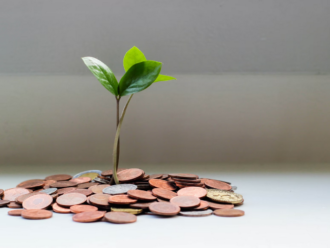Sustainable investing may have started off in equity markets but it is now taking flight in fixed income too.
Much of this growth could be attributed to the switch investors have made – from non-ESG (Environmental, Social, Governance) to ESG – within their core bond holdings to improve the sustainability profile of their investments. Investors are doing this partly under their own steam, but also because of regulatory pressure. An example is the EU’s Sustainable Finance Disclosure Regulation (SFDR). This regulation aims to harmonise fund disclosure standards, so investors can consider and compare funds based on their ESG risks and sustainable investment objectives.
Another potential source of growth is thematic investing. Investors may want, for example, to focus on climate change by investing in bonds that score highly on the E – “environmental” – of ESG. Alternatively, they may opt to concentrate on social (“S”) or governance (“G”) considerations.
Making an impact: green bonds
Yet another driver is impact investing: aiming to generate a measurable, sustain- able outcome alongside a financial return. A common form of impact investing is via green bonds, which raise capital for projects with environmental benefits, such as renewable energy, energy efficiency and wastewater management. The proceeds must be used exclusively for green projects, with the type of project declared up front. Issuance has grown steadily since the EU’s European Investment Bank (EIB) launched the first green bond in 2007. In 2019 alone, US$256 billion in green bonds was issued, with only a slight fall to US$236 billion in 2020 1. As well as multilateral entities such as the EIB, many national governments have also issued green bonds, starting with Poland in 2016. So too have many companies, including utilities funding renewable energy projects.
The transparency that investors enjoy via impact reporting is a differentiating feature of the instrument. Every year, all green bonds must report the environ- mental metrics of the projects funded by their proceeds – a process that is usually overseen by a third party such an auditor. This makes it possible for fund managers to do the same for their funds as a whole by aggregating the investments they hold. Green bonds can offer several other bene- fits. One is the higher quality – the aver- age credit rating is A+2. There are also tools to help the increasing number of institutional investors that want to align their portfolios with the goal of net zero carbon emissions3. This helps to explain the increase in demand for green bonds, which has in turn encouraged issuance. A BlackRock study of green bonds from 40 major US dollar and euro issuers, including both governments and companies, was an eye-opener. It laid to rest the myth that investors must pay extra for green bonds, the study found no pricing difference between green and non-green bonds.4
The index route: cloak of visibility
Many investors have chosen to invest in sustainable bonds through indices. The graph illustrates this well. Look at the sudden increase in total ESG-focused exchange-traded ETFs of which the bulk is in index products. Assets under managements (AUMs) doubled in 2019 and again in 2020, with this acceleration continuing in 2021.

Green bond issuance looks set for a major boost in the coming years. For example, the European Commission plans to issue approximately €225 billion of green bonds by 20265. They will form a key part of the EU’s recovery fund, designed to help EU economies recover from the corona- virus – largely by investing in greener infrastructure. A look at the steep historical trajectory of investing in sustainable equity index products confirms our belief that the trend in using indices to invest in sustainable fixed income is just getting started. Watch this space.
1) Source: BlackRock, 31 Dec 2020
2), 3), 4) Source: ‘Index with impact with green bonds’, BlackRock, Mar 2021
5) Source: ‘Index with impact with green bonds’, BlackRock, Mar 2021





